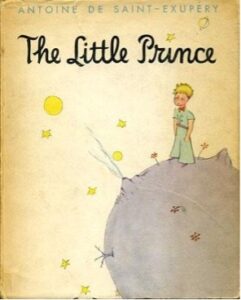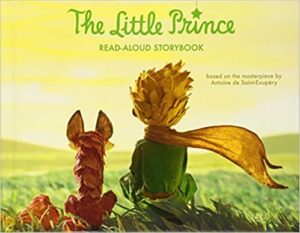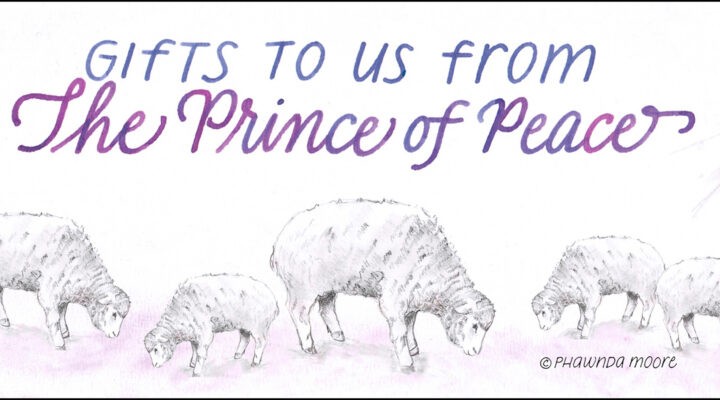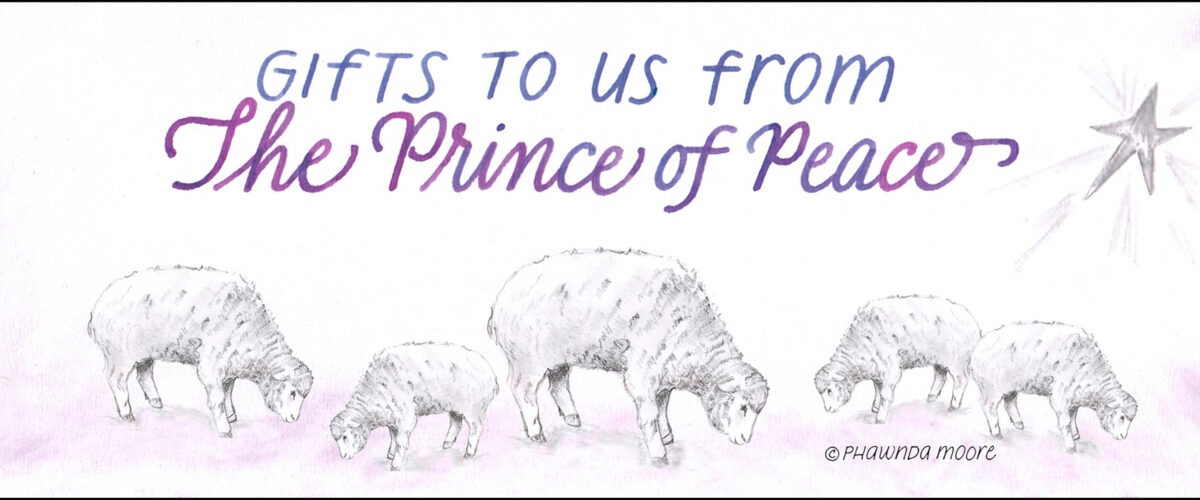It’s nearly Christmas, but after the ongoing chaos of the last two years, haven’t you wished you lived on another planet and could visit earth if you wanted? That experience is the setting for The Little Prince, written and illustrated in watercolor by Antoine de Saint-Exupéry.
This 1943 classic children’s book brims with wisdom and charm and finds its way into the hands of many adults. The Little Prince has sold more than 140 million copies throughout the world. Its parables of love, innocence, loss and truth have been translated into 300 languages and adapted to numerous art forms and media, including audio recordings, radio plays, live stage, film, television, ballet, and opera.
Some pastors have observed that it offers Christ-like truths of spiritual growth and authentic relationships.
 Last year, this book was a gift to my husband for Christmas and we read a few chapters aloud each night, alternating the primary roles of a little boy and a pilot. You know, with a little drama now and then. The book states, “All grown-ups were once children … but only few of them remember it.”
Last year, this book was a gift to my husband for Christmas and we read a few chapters aloud each night, alternating the primary roles of a little boy and a pilot. You know, with a little drama now and then. The book states, “All grown-ups were once children … but only few of them remember it.”
The Little Prince has the effect of turning back the clock to the ages we once were, asking more questions and realizing priorities.
In the beginning, a visiting “prince” meets a pilot who crashed his plane in the Sahara Desert, and immediately requests the pilot make a drawing of a sheep. The pilot obliges but offers his efforts of a hat instead, which the small child rejects several times. In the fourth drawing, the pilot says the sheep is inside a box, with holes for air. This one captures the little prince’s imagination; he is delighted and gladly accepts it.
The adventure continues in conversations between the little prince and the rest of the cast. Talking to several solitary adults for the first time, the little prince is not impressed. He thinks grownups are narrow-minded, stifling and strange, totally into their careers and egos. Most have become jaded and are ruled by greed and possessions yet lack the ability to relate to others or appreciate wonder. They provide a contrasting perspective to the child’s open heart, sensitivity and innocence.
 Another character is a fox, who helps the little prince understand love and responsibility in relationships. We learn that the boy had a special rose at home on Asteroid B-612. He spent time caring for her and they had deep affection for each other. She told him she was the only rose, which in time, proved to be untrue.
Another character is a fox, who helps the little prince understand love and responsibility in relationships. We learn that the boy had a special rose at home on Asteroid B-612. He spent time caring for her and they had deep affection for each other. She told him she was the only rose, which in time, proved to be untrue.
The little prince decided he could not trust her anymore. He grew lonely and had embarked on this adventure, curious about the universe. When he saw the fox, he hoped they could play, but the wary fox wasn’t interested in an instant friendship because, he said, no ties, or “taming,” had been established.
“But if you tame me, then we shall need each other. To me, you will be unique in all the world. To you, I shall be unique in all the world.” Like the rose at home. . . The little prince was beginning to understand, and the fox says: “And now here is my secret, a very simple secret: It is only with the heart that one can see rightly; what is essential is invisible to the eye. … It is the time you have wasted for your rose that makes your rose so important.”
“It is the time I have wasted for my rose,” says the little prince, so he would be sure to remember.
“Men have forgotten this truth,” says the fox. “But you must not forget it. You become responsible, forever, for what you have tamed. You are responsible for your rose.”
 In the final chapter, the little prince and the pilot talk further about what is truly important. Then the curtain lowers in the Sahara Desert. Readers, who by now are dabbing their wet eyes, are invited by the melancholy pilot to show up at his desert and humbly seek answers from the stars.
In the final chapter, the little prince and the pilot talk further about what is truly important. Then the curtain lowers in the Sahara Desert. Readers, who by now are dabbing their wet eyes, are invited by the melancholy pilot to show up at his desert and humbly seek answers from the stars.
He makes a final drawing to remember the little boy and their special friendship, and he hopes to hear his laughter again someday.
With themes of love, responsibility and spirituality, The Little Prince complements the true story of a child, a Savior, who came to earth to live in our hearts. Many authors and songwriters have written about the mysteries of relationships, choosing words creatively to express the meaning they have in our lives.
Children’s author Madeleine L’Engle wrote a poem, below, lamenting the timing of Christmas in 1973, when the U.S. was ending a war amid many other conflicts. She acknowledges, however, that the state of the world then, like today, was exactly why God’s beloved Child came. The poem fits every calendar in every country because God’s gift of love is so needed by all of humanity.
At Christmas, let’s remember the miracle, the star, the sheep, the manger. But most of all, in childlike faith, hold on to the assurance that Jesus, the Prince of Peace, gives us the greatest gift of all. Jesus is the one who shines light, grace and peace into our hearts about this troubled and chaotic world. We have hope in every situation, and we can ask for God’s presence to calm our fearful thoughts of tomorrow.
Especially in 2021, prepare room in your heart for Jesus, the gift above all gifts. Rejoice for Christmas!
First Coming
Madeleine L’Engle © Crosswicks, Ltd.
He did not wait till the world was ready,
till men and nations were at peace.
He came when the Heavens were unsteady,
and prisoners cried out for release.
He did not wait for the perfect time.
He came when the need was deep and great.
He dined with sinners in all their grime,
turned water into wine.
He did not wait till hearts were pure.
In joy he came to a tarnished world of sin and doubt.
To a world like ours, of anguished shame
he came, and his Light would not go out.
He came to a world which did not mesh,
to heal its tangles, shield its scorn.
In the mystery of the Word made Flesh
the Maker of the stars was born.
We cannot wait till the world is sane
to raise our songs with joyful voice,
for to share our grief, to touch our pain,
He came with Love: Rejoice! Rejoice!

Phawnda Moore
Phawnda Moore is a Northern California artist and award-winning author of Lettering from A to Z: 12 Styles & Awesome Projects for a Creative Life. In living a creative life, she shares spiritual insights from traveling, gardening and cooking. Find her on Facebook at Calligraphy & Design by Phawnda and on Instagram at phawnda.moore.
Related articles:
Angel wings and devil tails: Meditation on the Feast of the Holy Innocents | Opinion by Ken Sehested
Why I pray for Christmas miracles | Opinion by Mark Wingfield
Christ came to make us truly human: Human sinfulness and the image of God | Opinion by David Gushee


